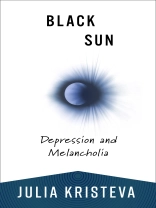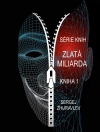Julia Kristeva examines melancholia across art, literature, philosophy, the history of religion and culture, and psychoanalysis. She describes the depressive as one who perceives the sense of self as a crucial pursuit and a nearly unattainable goal and explains how the love of a lost identity of attachment lies at the very core of depression’s dark heart. Kristeva analyzes Holbein’s controversial 1522 painting
The Body of the Dead Christ in the Tomb and considers the works of Marguerite Duras, Dostoyevsky, and Nerval.
Black Sun takes the view that depression is a discourse with a language to be learned, rather than strictly a pathology to be treated.
Tabella dei contenuti
1. Psychoanalysis—a Counterdepressant
2. Life and Death of Speech
3. Illustrations of Feminine Depression
4. Beauty: The Depressive’s Other Realm
5. Holbein’s Dead Christ
6. Gérard de Nerval, the Disinherited Poet
7. Dostoyevsky, the Writing of Suffering, and Forgiveness
8. The Malady of Grief: Duras
Notes
Index
Circa l’autore
Julia Kristeva is professor emerita of linguistics at the Université de Paris VII. A renowned psychoanalyst, philosopher, and linguist, she has written dozens of books spanning semiotics, political theory, literary criticism, gender and sex, and cultural critique, as well as several novels and autobiographical works, published in English translation by Columbia University Press. Kristeva was the inaugural recipient of the Holberg International Memorial Prize in 2004 “for innovative explorations of questions on the intersection of language, culture, and literature.”












